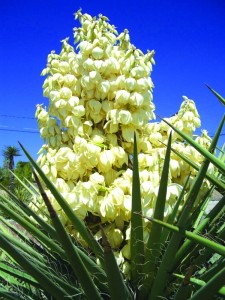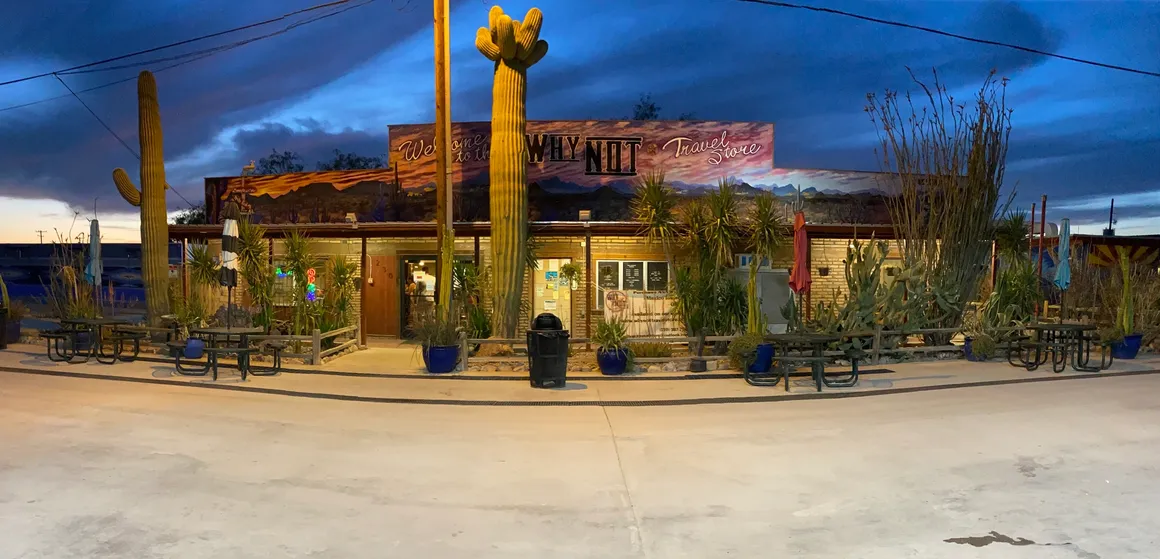 The Yucca plant is a perennial evergreen, with sword-shaped leaves, coming up from a rosette configuration. The tips of the leaves are pointed, hard and sharp. Yucca belongs to the Asparagaceae family; there are 40 to 50 species. The Yucca can be either a shrub or tree, such as the Joshua Tree. The flowers are light green to white; they grow atop a long stalk. The Yucca is found throughout the Americas and the Caribbean, especially in hot, arid and dry climates. It is known as the soap plant and the Spanish needle. The pointed tips of the leaves can be made into a needle and used for sewing. There has been some confusion between the Yucca and an unrelated plant called Yuca, aka. Cassava. The Cassava root is the source of tapioca.
The Yucca plant is a perennial evergreen, with sword-shaped leaves, coming up from a rosette configuration. The tips of the leaves are pointed, hard and sharp. Yucca belongs to the Asparagaceae family; there are 40 to 50 species. The Yucca can be either a shrub or tree, such as the Joshua Tree. The flowers are light green to white; they grow atop a long stalk. The Yucca is found throughout the Americas and the Caribbean, especially in hot, arid and dry climates. It is known as the soap plant and the Spanish needle. The pointed tips of the leaves can be made into a needle and used for sewing. There has been some confusion between the Yucca and an unrelated plant called Yuca, aka. Cassava. The Cassava root is the source of tapioca.
Pollination of the Yucca is performed by the Yucca Moth. The moth transfers the pollen from flower to flower and deposits an egg in each one. The larvae eat only some of the seeds as it matures. If the moth is unavailable, pollination needs to be done by hand.
The Yucca plant contains a chemical compound known as saponins; it is especially concentrated in the root. The roots, chopped and soaked in water, yield a soapy substance. Archeologists have found evidence of Yucca’s use in ancient Native American excavated sites. Native Americans have used the plant for shampoo, to wash clothing and ritual cleansings. Healthy green leaves pounded with a smooth rock over a wooden base, then scraped, will make enough soap to wash with when scrubbed between the hands with water. To manufacture cordage, soak the leaves in water to soften and follow the same procedure as above, separate the long fibers and by twisting them in a specific manner, a very strong rope can be made in the field when necessary.
The fibers are also used to make baskets, mats, fishing nets and sandals, paint brushes for pottery and body painting. The juice was used to make poison for arrow tips. Navajos also used the fibers to make hoops, prayer sticks and dyes. The yucca fibers are excellent for starting fire via the friction methods.
The Native Americans used the Yucca for medicinal purposes, as well. A drink from the root soaked in water was given to women to help alleviate pain during childbirth. A poultice made from the root was used on sores, skin diseases, inflammation, to stop bleeding and for sprains. Yucca is used for arthritis, high blood pressure, colitis, high cholesterol, migraine headaches, diabetes, liver and gallbladder disorders. Yucca applied directly to the skin can help with joint pain, baldness and dandruff.
The stems of the young flowers can be cooked like asparagus. The young flower buds are edible when roasted. The Pueblo Indians ate the young, un-ripened fruit of the plant raw, dried and baked like a potato; the fruit was sometimes added to soup.
Saponins are toxic to humans, but poorly absorbed and pass out of the body. Prolonged heat will destroy the saponins. Not to fear, saponins are found in other food items. The foamy head of Shasta Root Beer is due to the use of yucca in the recipe. All legumes, including beans, lentils, soy beans, peas, chickpeas and peanuts have saponins. Saponin is a potent antioxidant; it neutralizes free radicals. Saponins improve the immune system that fights bacterial and fungal infections and protects against bone loss. Some intestinal cramping can occur, but that can be prevented by adding ginger and prickly ash tree bark as an antidote. Fish are exceptionally affected by saponins and the Yucca is used to stupefying or kill them; making it easier to collect from pools of water when fishing.
Yucca supplements and products are available from health food stores and over the internet. As with any supplement, please consult with your physician before consuming.


























